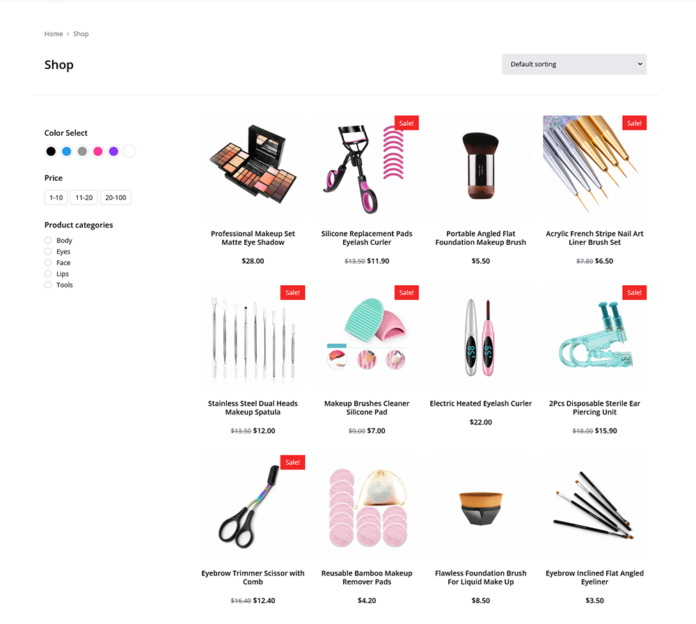Table of Contents

Introduction To Knife Safety:
In a food service kitchen, various types of knives are utilized, each with the potential to cause injuries if mishandled. Hence, comprehensive knife training becomes crucial in minimizing personal injury and ensuring the smooth operation of your kitchen. Whether you are a beginner or simply need a refresher, this article provides useful knife safety tips to enhance your knowledge and proficiency.
Knife safety is a topic often overlooked, yet it is a vital aspect that demands our attention. The potential dangers of mishandling a knife should not be underestimated. By following proper knife safety and etiquette, we can significantly reduce the risk of accidents and ensure a safer environment for ourselves and those around us.
Knife safety is paramount to the smooth functioning of any kitchen. Poor knife handling not only increases the risk of accidents and injuries but also compromises the efficiency and quality of your work. By mastering proper handling and cutting techniques, you can ensure a safer and more productive culinary experience.
I. Proper handling and grip of a knife:
When using a knife, it is crucial to hold it correctly. Ensure a secure grip on the handle, using your pointer finger and thumb to grasp the sides of the blade near the handle for added control. Keep your other hand out of the way to avoid any potential accidents. By maintaining a firm and controlled grip, you enhance your accuracy while reducing the risk of injury.
To begin with, holding a knife securely is crucial. It is essential to maintain a firm grip, ensuring the blade is always away from our body. Avoid any sudden movements that may lead to unintended injuries. By exercising caution and control, we greatly minimize the potential for accidents.
II. Using a cutting board and proper cutting techniques:
When using a knife for cutting tasks, it is important to choose an appropriate cutting surface such as a cutting board. Maintaining a controlled cutting motion prevents the knife from slipping or causing injury. Distractions should be kept to a minimum to ensure complete focus on the task at hand. Once finished, storing the knife properly will prevent any unintended accidents from occurring.
When cutting ingredients, always use a cutting board to protect both your work surface and the blade of your knife. Carefully position your hand holding the knife, curving your fingers away from the blade, to maintain a safe distance. Utilize one smooth motion to bring the blade down and through the ingredient for a clean and precise cut.
III. Dropping your knife:
In the event of dropping your knife, resist the temptation to grab it. Instead, let it fall to the ground. While a dropped knife can be sanitized or replaced, attempting to catch it may result in severe hand injuries. Prioritize your safety and that of others by allowing the knife to fall harmlessly to the ground.
IV. Paying attention while cutting:
In a busy kitchen environment, distractions are common. However, it is crucial to give your cutting tasks your undivided attention. If you find yourself becoming distracted, pause your work and address the distraction before resuming cutting. This ensures a safer working environment and allows you to produce your best work.
V. Training and education:
To maintain a culture of safety in the kitchen, it is essential to train and educate your staff on proper knife handling and safety techniques. Experienced workers should demonstrate correct knife usage to those unfamiliar or unsure. By investing in staff training, you promote a safer working environment and ensure that everyone is equipped with the necessary skills for knife safety.
Selecting the appropriate knife for each specific task is a fundamental aspect of knife safety that every foodservice professional should prioritize. With countless styles, shapes, and sizes of commercial knives available, making the right choice can seem overwhelming. However, understanding the key factors involved in knife selection can streamline the process and enhance both safety and efficiency in the kitchen.
VI. Guidelines for Choosing the Right Knife:
- Blade size: Consider the proportionality between the knife and the food you intend to cut. Using a small paring knife to butcher a large cut of meat would be inefficient, so opt for a cleaver instead to ensure precision and ease.
- Flexibility: Different tasks require different levels of blade flexibility. Reflect on the type of knife you would choose to remove scales from a fish, which would benefit from a flexible blade, versus the knife you would use to cut potatoes, which would typically necessitate a firm blade.
- Blade edge: The type of blade edge can significantly impact your cutting experience. Serrated knives excel at slicing through foods with delicate centers, while Granton blades, featuring hollow edges, are ideal for handling wet foods such as cheese and salmon.
Furthermore, it is crucial to remember that knives should only be used for cutting food. Using them for other purposes not only jeopardizes safety but also risks damaging the knife itself. By adhering to these guidelines, you can ensure the longevity of your knives and maintain a safe and efficient kitchen environment.
VII. Maintaining Focus Is The Key to Knife Safety
Amidst the fast-paced environment of a commercial kitchen, it is crucial to devote your full attention to the task of cutting. Distractions can lead to accidents and compromise the quality of your work. In such instances, it is essential to prioritize safety by immediately addressing the distraction before returning to the cutting process. By doing so, you not only safeguard yourself but also ensure that your work is of the highest standard.
Neglecting to adhere to these fundamental knife safety principles can transform one of your most indispensable tools into a potential hazard. Always keep in mind the basics of kitchen knife handling and safety, and make it a priority to educate and train your employees on proper usage techniques whenever you introduce a new knife into your tool set. By consistently emphasizing the importance of focus and concentration, you create an environment that values safety and excellence in every culinary endeavor.
VIII. Etiquette Of Knife Handling: Essential Guidelines for a Safe Kitchen
- Treat knives with utmost respect, recognizing their potential to cause harm if mishandled.
- Always grip a knife by its handle and avoid holding it by the blade.
- Resist the temptation to catch a falling knife – prioritize your safety and let it land harmlessly.
- Never put a knife in your pocket, as this poses a risk of injury and may damage the knife itself.
- Always use a cutting board to protect your hands and ensure consistent cuts when preparing ingredients.
- Avoid running your fingers along the blade to test its sharpness – rely on proper sharpening techniques instead.
- Pay attention to hand positions when cutting, keeping a secure grip on the handle and curving your fingers away from the blade to minimize the risk of accidents.
- Refrain from cutting items that are being held in your hand, as this poses unnecessary risks.
- Store knives in a block, rack, or protective case, ensuring they are easily accessible while avoiding accidental grabbing or dropping.
- Ask for permission before borrowing someone else’s knife and promptly return it after use.
- Clean your knife immediately after use to prevent contamination.
- When passing a knife to someone, lay it down on a work surface or hand it over handle-first to avoid accidents.
- Keep your knives sharp and clean, washing, rinsing, and sanitizing them between uses.
- Proper cutting surface selection is essential – avoid metal, glass, or marble surfaces that can damage the blade.
- Wash and store knives promptly after use to maintain cleanliness and prevent injury or cross-contamination.
- Avoid allowing the knife blade to extend beyond the edge of a table or cutting board, reducing the risk of accidental drops and injuries.
- Always use knives for their intended purposes, avoiding using them for tasks such as opening bottles or loosening drawers.
- Follow proper knife washing techniques to ensure sanitation and preserve the knife’s durability.
- Seek guidance from experienced colleagues if unsure about proper knife handling or usage for specific tasks.
- Give your full attention to the knife and task at hand, addressing distractions before continuing cutting for enhanced safety and quality of work.
- Designate a specific storage space for knives to promote organization and foster a safe knife usage routine.
- Keep knives stored appropriately, avoiding hidden or hard-to-find locations to prevent accidents.
- When carrying an unsheathed knife, hold it straight down at your side with the sharp edge facing behind you to minimize the risk of injury.
- In the event of dropping a knife, prioritize safety and refrain from attempting to grab it, as knives can be sanitized or replaced, while hand injuries can be much more severe.
IX. Knife maintenance & care:
Maintaining a sharp blade is essential for safer knife usage. Regularly sharpening the knife and cleaning it after each use ensures optimum performance. Proper storage in a dry and moisture-free environment prevents rust or corrosion, preserving the knife’s longevity.
Respect for others is imperative when handling a knife. It is essential to be mindful of personal boundaries and communicate one’s intentions with those present. Avoid reckless behavior or showing off with a knife, as it can lead to accidents and create an unsafe environment.
Educating children about knife safety at an early age is vital. Age-appropriate instruction, under supervision, allows children to understand the importance of responsible knife handling. Encouraging responsible behavior fosters a safety-conscious mindset in their knife usage.
Conclusion:
Mastering proper knife handling and cutting techniques is essential for a safe and efficient kitchen environment. By adhering to the guidelines outlined above, you can significantly reduce the risk of accidents and promote a culture of safety. Always prioritize knife safety and educate those around you to create a safer and more productive culinary space. Prioritizing safety when handling knives promotes a safer environment for ourselves, our loved ones, and everyone we encounter. Let us all be mindful, responsible, and proactive in promoting knife safety in our everyday lives.







